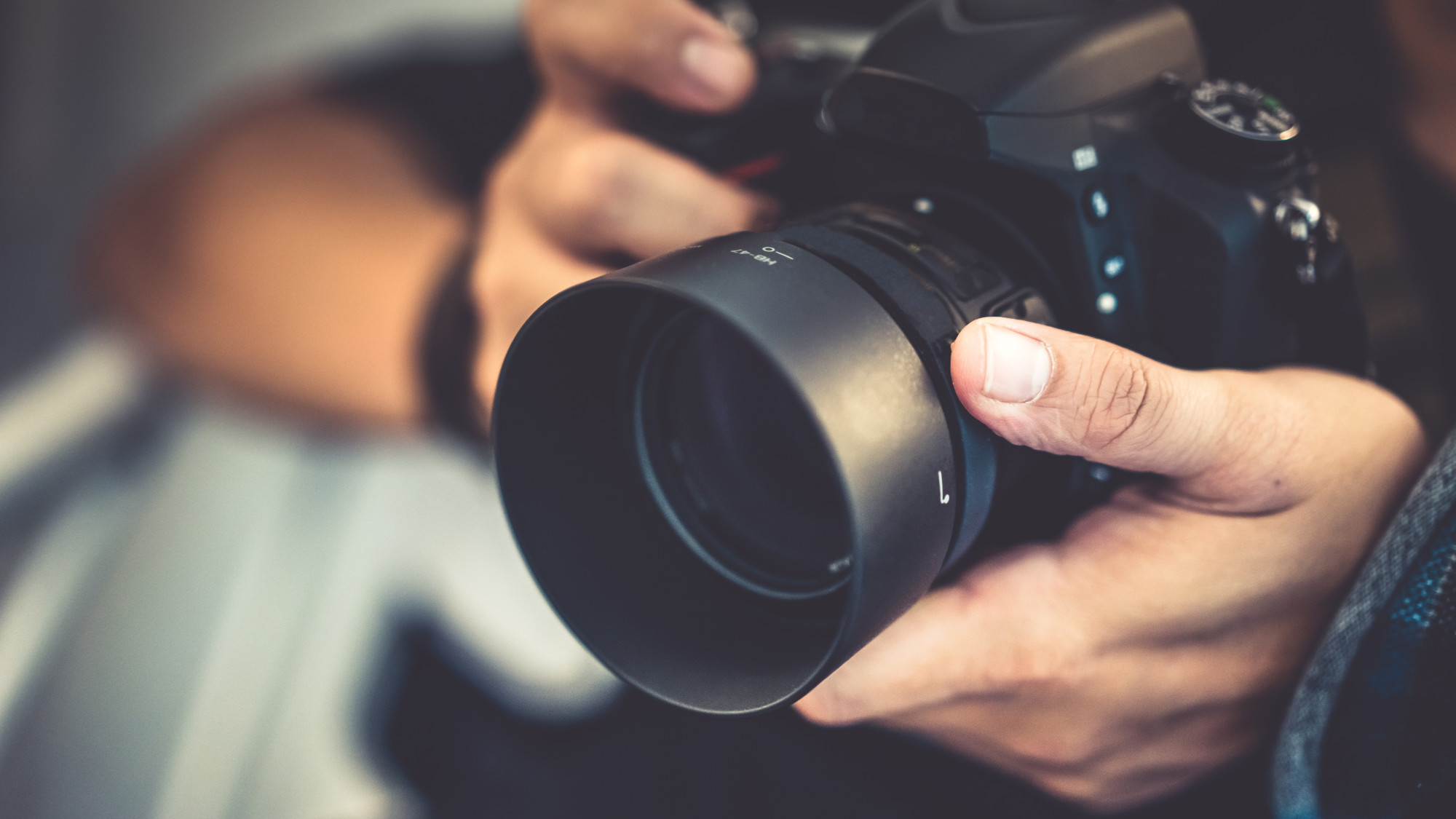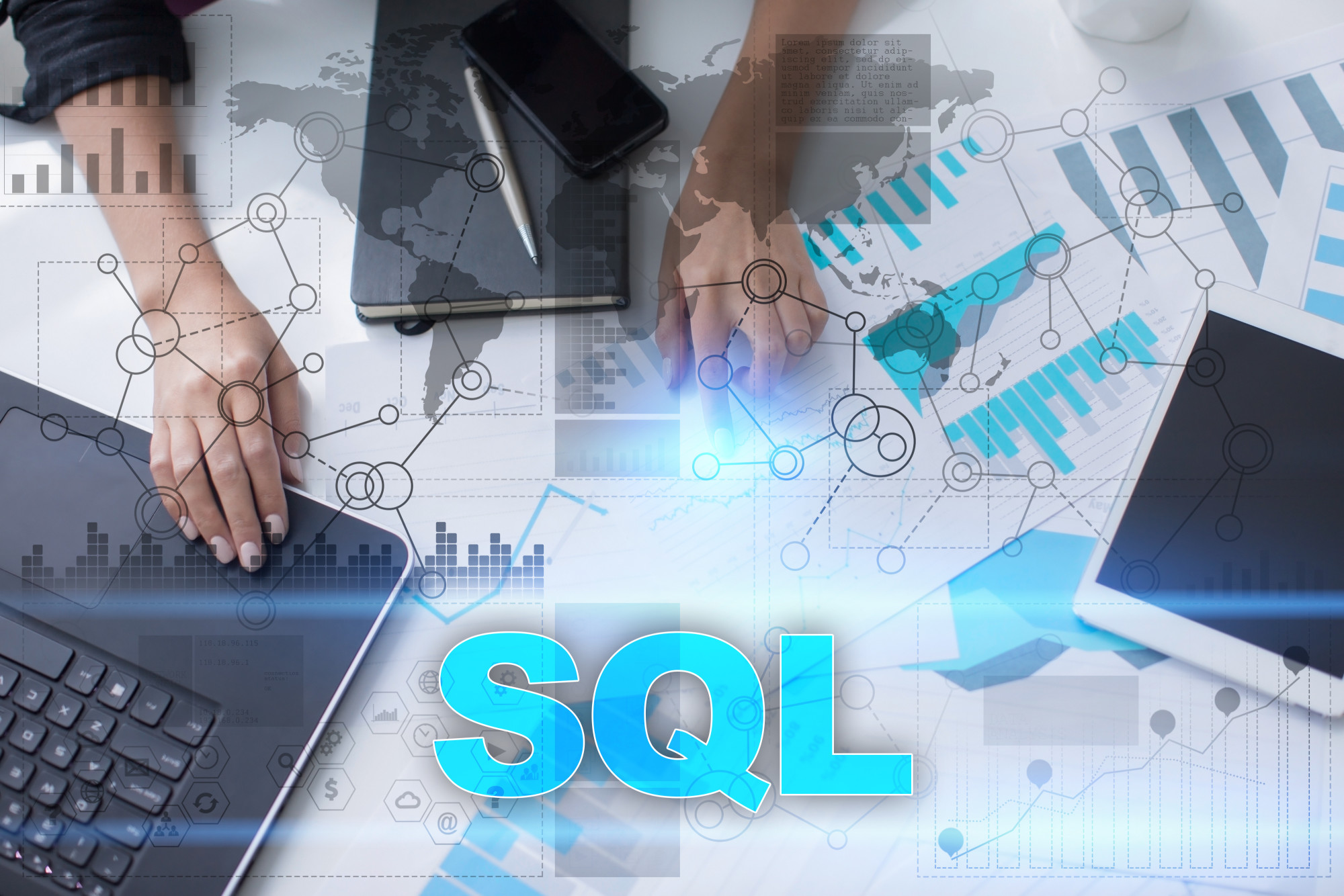Digital Photography for Beginners: Essential Tips, Tools, and Tricks
Posted on October 03, 2020 by Logo Design Tips and Tricks

There are around 119,000 professional photographers in the U.S and whether it’s capturing the happy couple on their wedding day to breathtaking landscapes, photography is like no other art form.
Like everything, great photography arises from plenty of practice. Perhaps you’re eager to experiment with digital photography but you’re not sure where to begin. Sound familiar?
If so, you’ve come to the right place. Here’s everything to know about digital photography for beginners.
Learn How to Hold Your Camera
When covering digital photography basics, it’s important to learn how to hold a camera. Use both hands and if you’re using the viewfinder, hold the machine close to your body so you have extra stability.
Make sure you don’t move while shooting otherwise the light will blur the photo. You can even hold your breath when you snap a photo to prevent the camera shake.
Understand the Exposure Triangle
No list of digital photography tips is complete without mentioning the exposure triangle. These are the three most important elements of exposure: ISO, aperture, and shutter speed. As you familiarize yourself with the camera, you must balance these three so you get sharp photos.
ISO controls the camera’s light sensitivity so when the ISO is low, the camera is less sensitive to light. And vice versa. Your ISO should be between 100 to 200 when you’re shooting in the day and 400 to 800 at night.
The aperture is the opening of the lens and it controls how much light seeps into the camera’s sensor along with the depth of field, the area surrounding the focal point of the image. When the aperture is wider, more light is let through but it has a narrow depth of field, fantastic if you want to isolate your subject. But if you want to focus on an entire group of people, use a narrow aperture.
And the shutter speed is the amount of time the shutter stays open while snapping a photo. So when you want to freeze a rapid-moving object, choose a shorter shutter speed as a long shutter will blur moving objects. Experiment and keep changing your ISO, aperture, and shutter speed so you can see the differences in images and learn how each individual element works.
Be Careful With Flash
An important factor in digital photography is flash. Your camera’s built-in flash at night or in low light causes red-eye or harsh shadows which isn’t desirable.
But sometimes you’re in a low-light setting and you have no choice to use flash. To accommodate this, go to the flash settings and reduce the brightness as much as possible. You can also try diffusing the flash’s light by placing opaque tape over it for a softer look.
Experiment With Perspective
All beginner digital photography students must play around with perspective so you don’t get standard, eye-level photos.
You can either change your elevation by going closer to the ground or switching up your angle like facing upwards. And try getting closer or farther away from the subject to see which looks best.
Play around with a combination of all three and you’ll notice how different your photos feel.
Understand the Rule of Thirds
One of the most famous photography tips is the rule of thirds.
This is where you place your subject a third of the way in as it’s stronger than sitting in the middle. Use your camera’s gridlines to help you. Photography is all about creativity so you don’t always have to abide by the rule of thirds but it’s important to understand it at the beginning.
Pay Attention to the Background
Keep the background clutter-free so it doesn’t pull the viewer’s attention away from your subject. Neutral colors and simple patterns work best because they complement the point of interest instead of overshadowing it.
Don’t worry if your background is busy, there are ways to fix it. For instance, change your angle or use a wider aperture and get closer to your subject.
Know About White Balance
White balance is where you tweak the light colors so they appear more natural. You can either set it to automatic on your camera, which is advised, or adjust it depending on your desired tone.
If you want to modify white balance as you shoot, change to Raw setting so you can alter the white balance in the editing stage instead.
Invest in a Great Photography Editing Software
Whether it’s learning how to get lightroom presets on mobile app or getting a photography editing software on your computer, editing photos is a critical stage in digital photography.
You don’t have to go overboard with editing, you may only tweak the brightness or contrast, but it lets you make amendments if necessary. It’s easy to make a mistake when editing so play around with the sliders and effects and see if it adds or takes value away from the photo.
Look After Your Camera Properly
Although it’s not a technical tip, it’s important to care for your camera. Get a special cleaning kit for your LCD screen and camera lens to wipe off any smudges. Always keep your camera in a special case and if you’re shooting in winter, wrap your camera in a plastic bag with silica desiccant packets to prevent moisture build-up.
Those Are Our Digital Photography for Beginners Tips
Now you know digital photography for beginners tips to get started.
Get comfortable with holding your camera and familiarize yourself with the exposure triangle so you learn about the individual elements. Apply the rule of thirds to your photos and play around with perspective to get great photos.
And don’t forget, post-processing is just as important as the shooting. Good luck!
Did you find this article helpful? If so, check out our posts covering everything from Advertising to Beauty.
7 Essential SQL Skills You Need to Master
Posted on October 02, 2020 by Logo Design Tips and Tricks

Did you know that over 132,000 database administrators are in the United States?
If you too aspire to become one in the future, you must know about data platforms and other related information. But without experience, you won’t have an idea of what skills to develop. At worst, you end up not getting your preferred career because of it.
Don’t feel discouraged yet.
With this guide, you’ll learn about the essential SQL skills you must learn. That way, you become an effective database administrator. Read on and find out more:
1. Database Fundamentals
To effectively know what SQL is, you must become an expert on the concept of databases. Know its purpose and how it helps companies organize and data more practically. That way, you’ll have a better appreciation of the database’s role in making companies function better.
This knowledge sets the foundation to help understand SQL’s functionality. It’s especially when you’re using it to benefit any of the millions of small businesses located in the country.
2. Purpose of Tables and Indexes
These concepts are the primary building blocks of SQL. A good comparison to a database is a library, with tables as books. Indexes, on the other hand, function like the old-fashioned file-card cabinets to aid you in finding the books you’re looking for.
It’s a fundamental skill to understand what tables and indexes are, as well as their functions. Knowing their actual operation is a more advanced skill. Regardless, having this skill helps in manipulating data within your database.
3. Basic SQL Syntax and Conditional Filters
Understanding any programming language requires you to learn its syntax. When applied to SQL, it means you must know how to make a query. This ensures you find the information you’re looking for.
For example, learning the most basic SELECT and FROM commands is a must. It’s because these keywords are part of a query that searches for data from tables. It’s a necessity because of the precise nature of SQL.
When using SQL for database management, the smallest of errors can lead to big problems later. That’s why you must get the syntaxes right. It means avoiding keyword errors and misplaced quotation marks to name a few.
Also, you need not pull all records from a column when querying for information. In most cases, your queries will get specific data. Understanding the query structure aids to write more complex commands to extract your desired information.
Examples include the WHERE clause along with OR and AND for table filtering. To organize the data you pulled from the table, use GROUP BY and ORDER BY. After learning this, you’ll know how to write almost all basic queries.
4. Joins and Subqueries
The data you’ll work with aren’t necessarily within the same table. In most cases, it won’t be the case, that’s why mastering joins is a necessary skill. This allows you to merge data from various tables, making it easier to analyze various datasets.
Four types of joins exist in SQL: inner, left, right, and full. Mastering this requires knowing what type to use, as well as the code necessary to execute it.
Subqueries are queries found within another statement, functioning similarly as joins. Use these to link data across various tables. When done right, they’re more efficient compared to joins because it simplifies the data extraction process.
5. Understand How Indexes Function
Database indexes exist for faster queries. Indexes instill order onto data tables, making it easier for you to get your desired data. Knowing the purpose and mechanics behind index creation gives you more ideas on how to use them effectively.
To make the most out of this feature, learn the subtle differences between clustered and non-clustered indexes. You must also know how indexing adds data structure. To top it off, learn the guidelines for making efficient indexes.
6. Learn PHP and How to Work With Popular Database Systems
SQL is a programming language without a database system. It means you must work with systems like MySQL or PostgreSQL to store data for later use. The good news is both are open-source and available for free.
While you’re mastering these, pick up PHP along the way too. It might be an odious ordeal to learn another programming language, but it makes things easier. Gaining a degree of PHP mastery allows you to interact with lots of popular SQL database programs such as MySQL.
If you use these two concepts in tandem, you can build almost any type of website. This is an important skill to learn when you want to become more valuable to the company you’ll work for. Besides, learning something new is always great for enriching your career.
Not sure about using COALESCE in PostgreSQL? Check this guide here to learn more.
7. Execution Plans
This serves as a visual representation of your database engine’s query execution. With this, you have a sneak peek under the hood. This means you get an idea of how the information gets processed by your database management system.
With execution plans, you’ll learn more about a query’s efficiency. It’s one of the primary tools when you troubleshoot an underperforming or slow query. Understanding this concept enables you to finetune your queries without compromising its performance.
Honorable Mentions
These are some advanced concepts you must learn when you master the basics. It’s especially important if you’re planning to run an SQL server.
Backup Databases
This is critical since it’s a contingency in case your current database gets corrupted or damaged in any way. Thankfully, lots of backup types exist. It’s only a matter of knowing which to use.
OLAP
Online Analytical Processes is a class of database applications allowing faster data analysis. This includes innovative methods going beyond the simple two-dimensional spreadsheet. It takes lots of skill to implement, but it’s worth the benefit of gaining insight into various businesses.
Learn SQL Skills Today!
These are the necessary SQL skills you must learn to become a great database administrator. Use these to guide your learning experience.
Of course, mastering SQL and other languages and tools doesn’t end with these 7 skills. To learn even more coding tips and tricks, we encourage you to continue reading our in-depth tech guides right here!
Follow the Leader: A Brief Overview of How People Qualify Leads
Posted on October 01, 2020 by Logo Design Tips and Tricks

Leads are the lifeline of any successful sales organization. It doesn’t matter what you’re selling or who you’re selling to – in order for a company to be successful and generate revenue, it has to have a number of leads that will convert into customers.
With an abundance of leads, however, comes a curious caveat – what sales organizations don’t want is a plethora of leads that aren’t going to convert into customers. That just wastes their time on poor-quality leads.
Consequently, one has to first qualify leads to ensure that they are actually serious about becoming a potential customer, before spending a lot of time trying to engage with and close that lead into a sale.
In this article, we’ll teach you how lead qualification works.
Persona Fit
The first thing to consider with lead qualification is persona fit. One thing that your marketing team should already have built out is an ideal customer persona. Think of this persona as a profile of your most ideal customer that is ready to buy on the spot.
The persona will include a variety of factors stretching from geographic location to gender to age. In the event that you sell to businesses (a B2B company), then your buyer persona would be of a company and encompass things like headquarters location, company size, company industry, and the like.
To qualify the lead, it should meet some minimum requirements in the persona. For instance, if you only work with customers in the United States, no lead that comes in from Europe can be considered a marketing qualified lead.
Interest Demonstrated
Another way to qualify leads is to take a look at the interest that they have demonstrated. You don’t want to spend a lot of time following up with leads that simply don’t have a lot of interest in the product or service that you are selling.
There are a few different ways to gauge interest, and the ones you employ will vary based on your industry. You could leverage marketing automation to track their browsing history – have they spent a lot of time on your website? In addition, if you add them to an email list and send them email broadcasts, email opens and link clicks could be an indicator of demonstrated interest.
Last but not least, another way someone could demonstrate interest is by reaching out to initiate sales conversations. These are likely to be your hottest leads.
Budget Existent
Finally, your lead also has to have the budget to buy your product or service. It doesn’t matter how interested they are if they don’t have the capacity to pony up the cash. But you get qualified leads that fit your general customer profile, have demonstrated interest, and are willing to come up with the cash, then you’ve got deals just waiting to be closed.
How to Qualify Leads
There you have it! Now that you know how to qualify leads, your sales team can be much more effective in chasing the deals that they know have a high chance of closing.
For more general business advice, check out the rest of the website!
Before You Sign On the Dotted Line: 3 Things You Should Know About Your First Home Mortgage
Posted on September 30, 2020 by Logo Design Tips and Tricks

Buying your first home is a daunting, terrifying — but exciting time! It’s a time when you can think back about all the things that brought you to a point when you can settle down. It’s also an opportunity to look ahead and wonder what the future may hold for you, your family, and your finances.
Your first home mortgage will dictate a lot of what the future holds for you. Choosing a bad loan can have devastating consequences down the line, and cost you more than money. However, if you do your research and trust experts, you will be able to find a loan that works with you and prepares you for better things ahead.
Keep reading below to learn more about what you should look for in your first home mortgage, and how to be a responsible home buyer.
Your First Home Mortgage Should Make You Question Things
If you’re not at least a little scared about buying a home, then you should rethink if you’re ready for one. It takes a lot of responsibility to own your home, and not everybody is ready for it. A house will challenge more than just your finances — it will also drain your mental health.
You should be wondering if your job is actually secure enough to fund a mortgage. You should also ponder whether you’re ready to settle down into a place for several years. Are you ready to spend time away from friends if they move away, and are you ready to repay something that may take decades to wipe away?
What is Your Financial Situation Actually Like?
The most important thing you should ask yourself about is your financial situation. Most people already have a secure and stable job by the time they apply for a mortgage, or that’s what it seems like. You should think about your financial situation beyond your immediate experience.
Is your industry stable and is your company going to last for the duration of your mortgage? Will your family be happy in the location you picked, and can you find other work if you need it? Questions like these should all be answered before getting a mortgage.
First Time Home Buyer’s Have Special Advantages
If you’re buying a home for the first time, then you’re in luck because you have access to special advantages. First home buyer loans often come with federal supplements and advantages to help you get your first home. They can help you meet the required amount for a down payment, and even help you get better interest rates.
All you need to do is speak with a financial expert about what you qualify for. Many can be found through your bank, or online.
Congratulations on Buying Your First Home!
If you’re about to take out your first home mortgage, then congratulations is in order! You’re about to take the next step and settle down into your new life. You’ve done what man others couldn’t have managed to find a place where you can be happy,
Congratulations!
However, there are still some challenges ahead, like caring for your home and repaying your mortgage. And for more advice on that, keep reading here!








